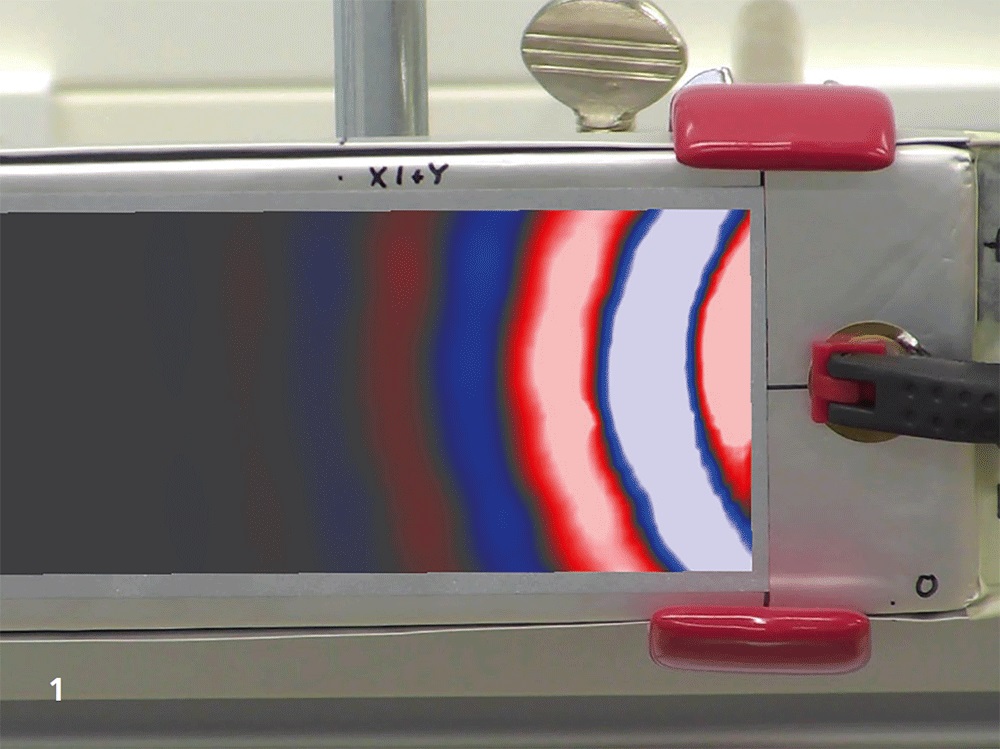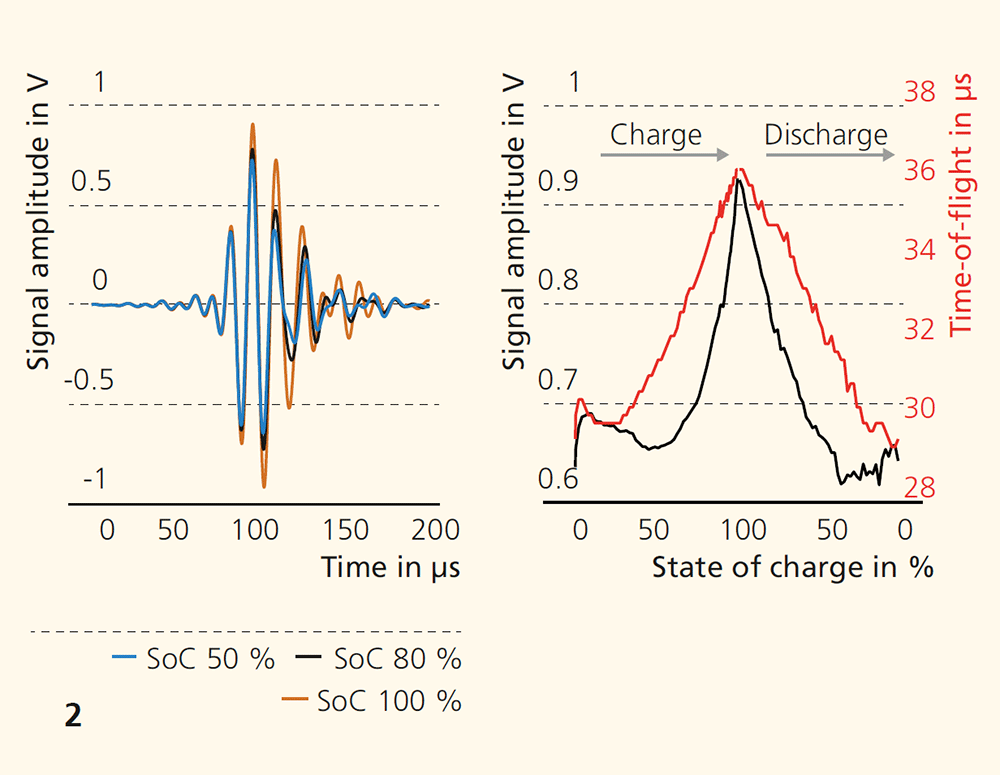
Charge-state monitoring of Lithium-ion batteries with guided waves
Current research



The use of Li-ion batteries is widespread nowadays. Their highly available power and energy density make them interesting not only for applications in consumer electronics but also in the rapidly growing field of electromobility. In use, the availability of this power across the entire service life is key. The complex physical and chemical structure of the materials used leads to unwanted degradation within the battery. This is caused by various processes, such as the loss of freely migrating Li ions, and electrode aging. Over time and over several charging cycles, this will decrease capacity and power, and therefore reduce efficiency. The battery‘s lifetime will be significantly shortened.
Innovative solutions for battery monitoring
Currently, the entire battery system is monitored by the integrated Battery Management System (BMS). It can monitor and control the batteries at the module level using measurands, such as temperature, voltage and current. Monitoring of batteries down to the cell level is only done in high-performance applications using electrochemical impedance spectroscopy (EIS). For this, EIS requires accessible electrical contact points, which is difficult to implement in closed, ready-to-use battery systems.
By using guided ultrasonic waves, Fraunhofer IKTS facilitates the monitoring of batteries at the cell level, which is not based on the measurement of electrical parameters of the battery itself. Piezoelectric transducers excite and receive guided waves on the surface of a battery cell. These waves are influenced by the change of the elastic modules and density of the electrodes while the battery is being charged/discharged, and they can be measured. The complex propagation behavior of the waves was investigated with a laser vibrometer (Figure 1). It could be shown that the properties of the waves (amplitude, phase) are directly related to the state of charge (SoC) of the battery (Figure 2). This allows measuring the state of charge independent of the electrical parameters and does not require access to electrical contacts.
Beyond the state of charge
When it comes to planning the replacement of batteries, the remaining service life is as important as the current state of charge. A loss of capacity directly affects the measured signal parameters of the waves. This makes the degradation of the battery measurable and predictable. With this procedure, battery systems of the future can be replaced at the optimal time and continued operation in second-use applications becomes possible depending on the actual battery condition.